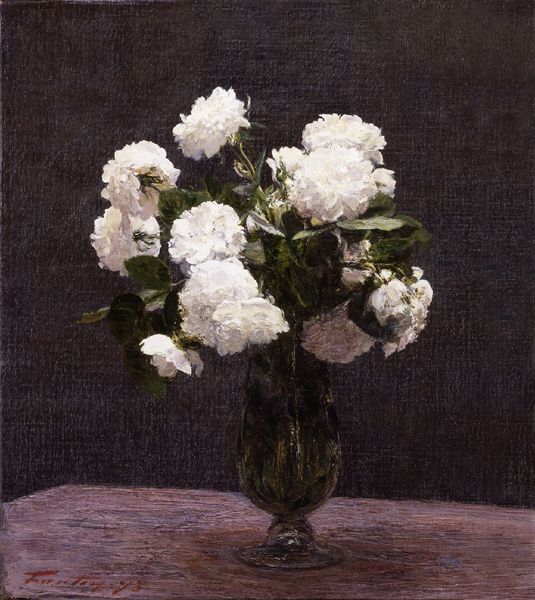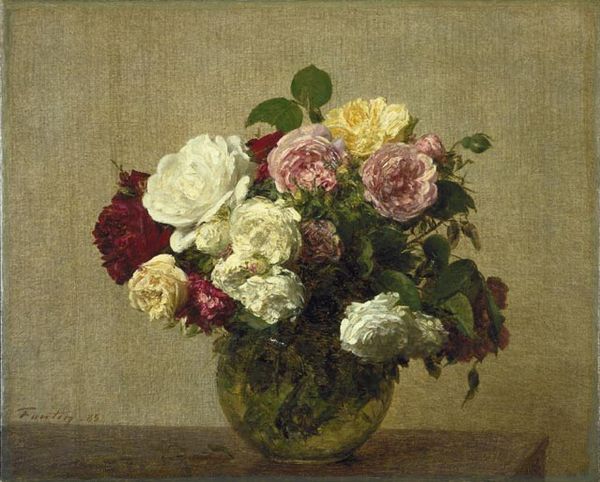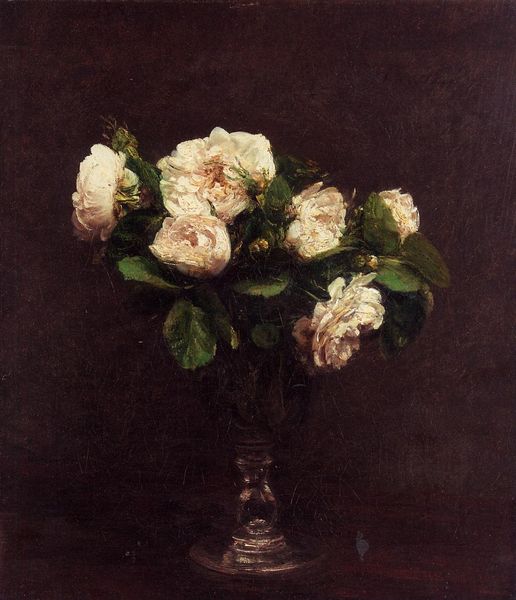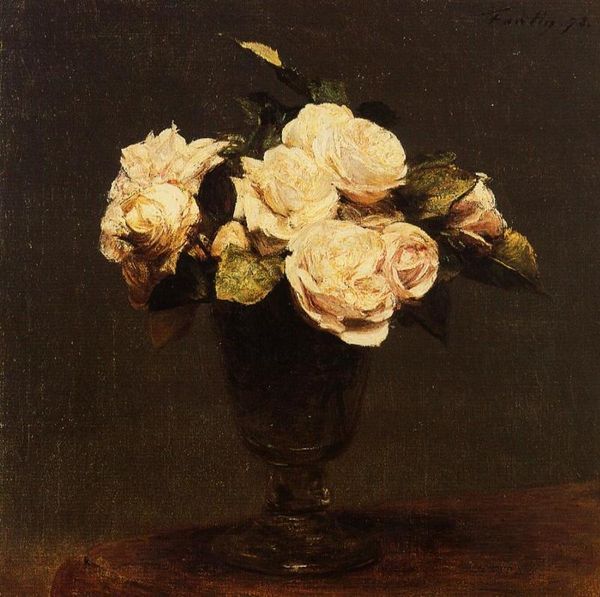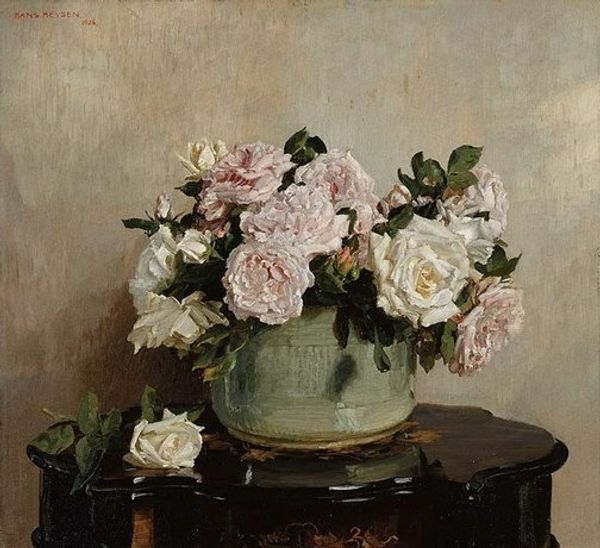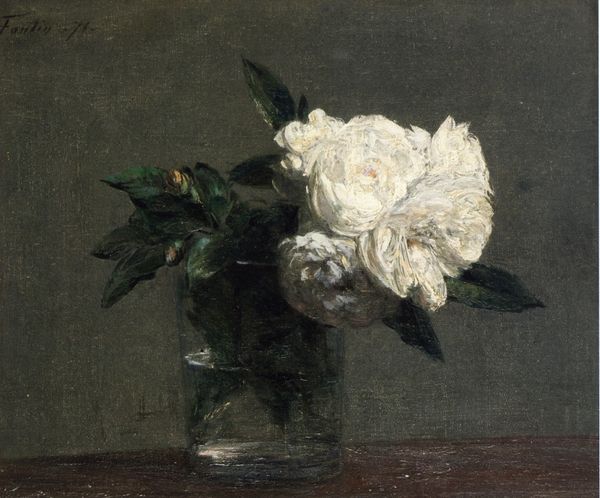
Copyright: Public domain
Curator: This is Henri Fantin-Latour’s "White Roses in a Vase," painted in 1885. A beautiful example of his enduring fascination with floral still life. Editor: It's instantly melancholic, isn’t it? The muted tones, the way the roses are already starting to droop. It whispers of fleeting beauty and the passage of time. Curator: Indeed. Look at how Fantin-Latour captures the textures. The impasto creates a tangible sense of petal and leaf, an almost photographic realism combined with the expressiveness of brushstrokes. Consider, too, the use of chiaroscuro. The roses emerge from the darkness. Editor: But that "darkness," as you say, wasn’t simply about contrasting light. In the late 19th century, these carefully arranged bouquets were often symbolic. They reflect the restrictive societal expectations placed on women of the time—beautiful objects, admired, but ultimately contained. Curator: That's an interesting reading. Certainly, the arrangement within the vase is controlled. However, I'm drawn to the chromatic range within the whites, the subtle gradation he achieves. It shows technical virtuosity. Editor: And wasn't Fantin-Latour known for his relationships with female artists? He painted group portraits showing them pursuing their craft. Perhaps these roses aren’t about confinement, but about appreciating the delicacy of the feminine spirit, reflecting his respect and perhaps hidden anxieties, towards women and their struggles in art world during his life time? The fleeting beauty you spoke of a moment ago may refer to something about his society or friendships. Curator: That adds a fascinating layer, considering the context. His own ambivalent place between traditionalism and Impressionist innovation lends another ambiguity to this work. Editor: Exactly. The romantic softness paired with almost photographic detail complicates a single narrative. It's a dialogue, much like the ones that occur with artists and their supporters, but he seems to present both viewpoints together. Curator: I agree. This piece highlights how a still life can be anything but "still." Editor: A testament to art's potential for engaging viewers over generations to reflect on the different aspects of life.
Comments
No comments
Be the first to comment and join the conversation on the ultimate creative platform.



